Mechanism of action of herbs and their active constituents used in hair loss treatment
October 2016
in “Fitoterapia”
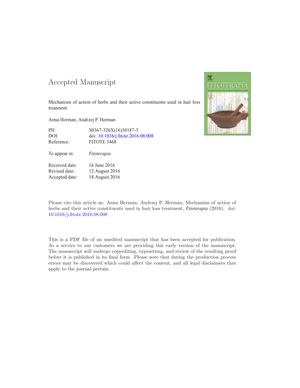
TLDR Some herbs and their components might help treat hair loss by affecting various biological pathways, but more research and regulation are needed.
The document from October 1, 2016, explores the potential of various herbs and their active constituents in treating hair loss, particularly androgenetic alopecia (AGA). It highlights that caffeine can stimulate human hair follicle growth by inhibiting testosterone effects, as demonstrated in a study with scalp biopsies from 14 male AGA patients. The liposterolic extract of Serenoa repens and ß-sitosterol, as 5α-reductase inhibitors, could be novel AGA treatments. Flavonoids like myricetin, quercetin, baicalein, and fisetin are potent inhibitors of type I 5α-reductase, while biochanin A, daidzein, genistein, and kaempferol target type II isozyme. Estrogens and antiandrogens may promote hair growth, although estrogens can also inhibit it. TGF-β is a catagen inducer, and certain herbs can inhibit TGF-β1, potentially preventing hair follicle regression. PGD2 inhibits hair growth, whereas PGE2 and PGF2α stimulate it. The conclusion suggests herbal products as potential alternatives to conventional treatments, but emphasizes the need for further research, government regulations, and standardization of active ingredients in herbal products.
View this study on sciencedirect.com →
Cited in this study
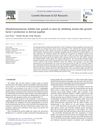
research Dihydrotestosterone Inhibits Hair Growth in Mice by Inhibiting Insulin-Like Growth Factor-I Production in Dermal Papillae
Dihydrotestosterone (DHT) stops hair growth in mice by lowering a growth factor important for hair.
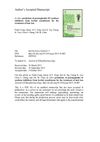
research In silico prediction of prostaglandin D2 synthase inhibitors from herbal constituents for the treatment of hair loss
Herbal compounds like ricinoleic acid, quercetin-3-O-rutinoside, and hinokiflavone may be safe and effective for treating hair loss.
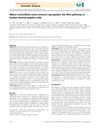
research Malva verticillataseed extracts upregulate the Wnt pathway in human dermal papilla cells
Malva verticillata seed extract might help treat hair loss by activating hair growth signals in skin cells.

research The Androgenic Alopecia Protective Effects of Forsythiaside-A and the Molecular Regulation in a Mouse Model
Forsythiaside-A, a natural substance, can protect against hair loss and is more effective than current treatments, potentially making it a good option for hair loss treatment.
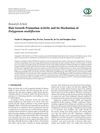
research Hair Growth Promotion Activity and Its Mechanism ofPolygonum multiflorum
Polygonum multiflorum can promote hair growth when taken orally or applied topically.
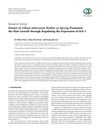
research Extract ofAllium tuberosum Rottler ex SprengPromoted the Hair Growth through Regulating the Expression of IGF-1
Garlic chive extract helped mice grow more hair by increasing a specific growth factor.
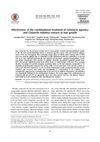
research Effectiveness of the combinational treatment ofLaminaria japonicaandCistanche tubulosaextracts in hair growth
Laminaria japonica and Cistanche tubulosa extracts combined may effectively promote hair growth.
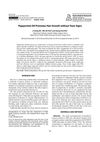
research Peppermint Oil Promotes Hair Growth without Toxic Signs
Peppermint oil can effectively promote hair growth without being toxic.
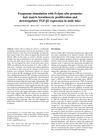
research Exogenous stimulation with Eclipta alba promotes hair matrix keratinocyte proliferation and downregulates TGF-β1 expression in nude mice
Eclipta alba extract helps increase hair growth and decrease hair loss-related protein in mice.
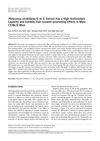
research Platycarya strobilacea S. et Z. Extract Has a High Antioxidant Capacity and Exhibits Hair Growth-promoting Effects in Male C57BL/6 Mice
Platycarya strobilacea extract is a strong antioxidant that can grow hair better than minoxidil.

research The Inhibitory Effect of Scutellaria baicalensis Extract and Its Active Compound, Baicalin, on the Translocation of the Androgen Receptor with Implications for Preventing Androgenetic Alopecia
Scutellaria baicalensis extract and baicalin may help prevent hair loss.
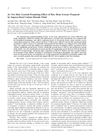
research <i>In Vivo</i> Hair Growth-Promoting Effect of Rice Bran Extract Prepared by Supercritical Carbon Dioxide Fluid
Rice bran extract can potentially treat hair loss by promoting hair growth and increasing the number of hair follicles.
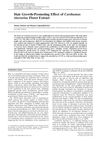
research Hair Growth‐Promoting Effect of Carthamus tinctorius Floret Extract
Safflower (Carthamus tinctorius) extract helps hair grow and could be used in hair products.
research Hematological and hepatic effects of vascular epidermal growth factor (VEGF) used to stimulate hair growth in an animal model
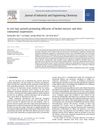
research In vivo hair growth-promoting efficacies of herbal extracts and their cubosomal suspensions
Some herbal extracts, especially when used in cubosomal suspensions, were as effective as Minoxidil in promoting hair growth.
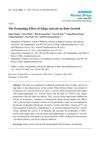
research The Promoting Effect of Ishige sinicola on Hair Growth
Ishige sinicola, a type of seaweed, may help hair grow by blocking a hair loss-related enzyme and boosting important cell growth.
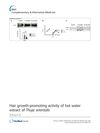
research Hair growth-promoting activity of hot water extract of Thuja orientalis
Thuja orientalis hot water extract may help hair grow by starting the growth phase and improving hair follicle development.
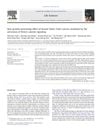
research Hair growth-promoting effect of Aconiti Ciliare Tuber extract mediated by the activation of Wnt/β-catenin signaling
Aconiti Ciliare Tuber extract may help hair grow by activating a specific cell signaling pathway.
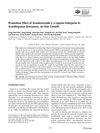
research Promotion effect of acankoreoside J, a lupane-triterpene in Acanthopanax koreanum, on hair growth
Acankoreoside J from Acanthopanax koreanum may help promote hair growth.
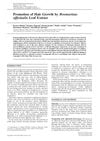
research Promotion of Hair Growth byRosmarinus officinalisLeaf Extract
Rosemary leaf extract may be an effective natural treatment for hair growth and male pattern baldness.

research Prostaglandin D 2 Inhibits Hair Growth and Is Elevated in Bald Scalp of Men with Androgenetic Alopecia
PGD2 stops hair growth and is higher in bald men with AGA.

research Evidence-based (S3) guideline for the treatment of androgenetic alopecia in women and in men
Use minoxidil for hair loss; finasteride and dutasteride for men, dutasteride for women.

research Minoxidil activates β-catenin pathway in human dermal papilla cells: A possible explanation for its anagen prolongation effect
Minoxidil helps hair growth by activating the β-catenin pathway.
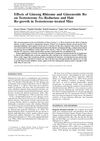
research Effects of Ginseng Rhizome and Ginsenoside Ro on Testosterone 5α-Reductase and Hair Re-growth in Testosterone-treated Mice
Ginseng, especially red ginseng, may help regrow hair and block a hair loss-related enzyme.
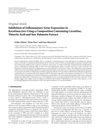
research Inhibition of Inflammatory Gene Expression in Keratinocytes Using a Composition Containing Carnitine, Thioctic Acid and Saw Palmetto Extract
The composition with carnitine, thioctic acid, and saw palmetto extract may effectively reduce inflammation in hair follicle cells.

research Innovative use of spironolactone as an antiandrogen in the treatment of female pattern hair loss.
Spironolactone helps regrow hair in women with hair loss.
research Targeting to the hair follicles: Current status and potential
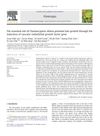
research The essential oils of Chamaecyparis obtusa promote hair growth through the induction of vascular endothelial growth factor gene
Essential oils from Chamaecyparis obtusa may help hair grow by increasing a growth-related gene.
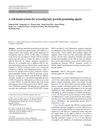
research A cell-based system for screening hair growth-promoting agents
Apigenin may help promote hair growth and could treat hair loss.
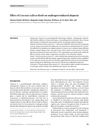
research Effect ofCuscuta reflexaRoxb on androgen-induced alopecia
Cuscuta reflexa extract may help treat hair loss caused by hormones.
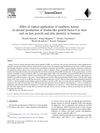
research Effect of topical application of raspberry ketone on dermal production of insulin-like growth factor-I in mice and on hair growth and skin elasticity in humans
Raspberry ketone may help grow hair and improve skin elasticity.
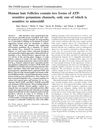
research Human hair follicles contain two forms of ATP‐ sensitive potassium channels, only one of which is sensitive to minoxidil
One minoxidil-sensitive potassium channel exists in human hair follicles.
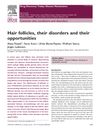
research Hair follicles, their disorders and their opportunities
Hair follicles offer promising targets for delivering drugs to treat hair and skin conditions.
research Comparison of stratum corneum penetration and localization of a lipophilic model drug applied in an o/w microemulsion and an amphiphilic cream
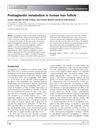
research Prostaglandin metabolism in human hair follicle
Human hair follicles can make and process prostaglandins, which may affect hair growth.

research The importance of dual 5α-reductase inhibition in the treatment of male pattern hair loss: Results of a randomized placebo-controlled study of dutasteride versus finasteride
Dutasteride more effective for hair growth, but has more side effects than finasteride.
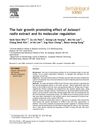
research The hair growth promoting effect of extract and its molecular regulation
Asiasari radix extract promotes hair growth and increases protein synthesis and cell proliferation.
research Influence of prostaglandin F2α and its analogues on hair regrowth and follicular melanogenesis in a murine model
Prostaglandin F2alpha and related compounds can increase hair growth and darken hair in mice.
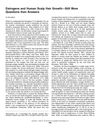
research Estrogens and Human Scalp Hair Growth—Still More Questions than Answers
The effects of estrogen on human hair growth are unclear and need more research.

research Minoxidil: mechanisms of action on hair growth
Minoxidil boosts hair growth by opening potassium channels and increasing cell activity.
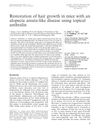
research Restoration of hair growth in mice with an alopecia areata-like disease using topical anthralin
Topical anthralin helped regrow hair in mice with a condition similar to human alopecia.
research Epidermal Growth Factor as a Biologic Switch in Hair Growth Cycle
research The extract of Thujae occidentalis semen inhibited 5α-reductase and androchronogenetic alopecia of B6CBAF1/j hybrid mouse
Thujae occidentalis semen extract may help treat male pattern baldness by blocking a hair loss-related enzyme and reducing hair loss in mice.
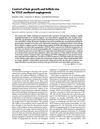
research Control of hair growth and follicle size by VEGF-mediated angiogenesis
VEGF helps hair grow and determines follicle size by increasing blood vessel growth.

research Treatments for Androgenetic Alopecia and Alopecia Areata
Minoxidil and finasteride treat hair loss; more research needed for other options.
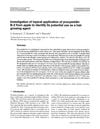
research Investigation of topical application of procyanidin B-2 from apple to identify its potential use as a hair growing agent
Apple-derived procyanidin B-2 can safely promote hair growth in men.
research 17β-Estradiol and ICI-182780 regulate the hair follicle cycle in mice through an estrogen receptor-α pathway
research WHOLE HAIR FOLLICLE CULTURE

research Minoxidil upregulates the expression of vascular endothelial growth factor in human hair dermal papilla cells
Minoxidil boosts growth factor in hair cells, potentially promoting hair growth.

research Activation of Cytoprotective Prostaglandin Synthase-1 by Minoxidil as a Possible Explanation for Its Hair Growth-Stimulating Effect
Minoxidil boosts hair growth by activating PGHS-1.
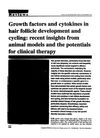
research Growth factors and cytokines in hair follicle development and cycling: recent insights from animal models and the potentials for clinical therapy
Growth factors and cytokines are important for hair growth and could potentially treat hair loss, but more research is needed to overcome challenges before they can be used in treatments.
research An estrogen receptor pathway regulates the telogen-anagen hair follicle transition and influences epidermal cell proliferation.
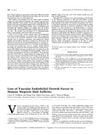
research Loss of Vascular Endothelial Growth Factor in Human Alopecia Hair Follicles
Hair follicles in people with alopecia have lower levels of a key blood vessel growth protein.
research Chemical agents and peptides affect hair growth
research Fibroblast growth factor and epidermal growth factor in hair development
research Sex hormones and antiandrogens influence in vitro growth of dermal papilla cells and outer root sheath keratinocytes of human hair follicles
Related
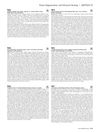
research 943 Temporal-spatial activation of Wnt-signaling within Type1 / Type 2 immunity during wound healing
Wnt-signaling is regulated differently in skin cells and immune responses during wound healing.